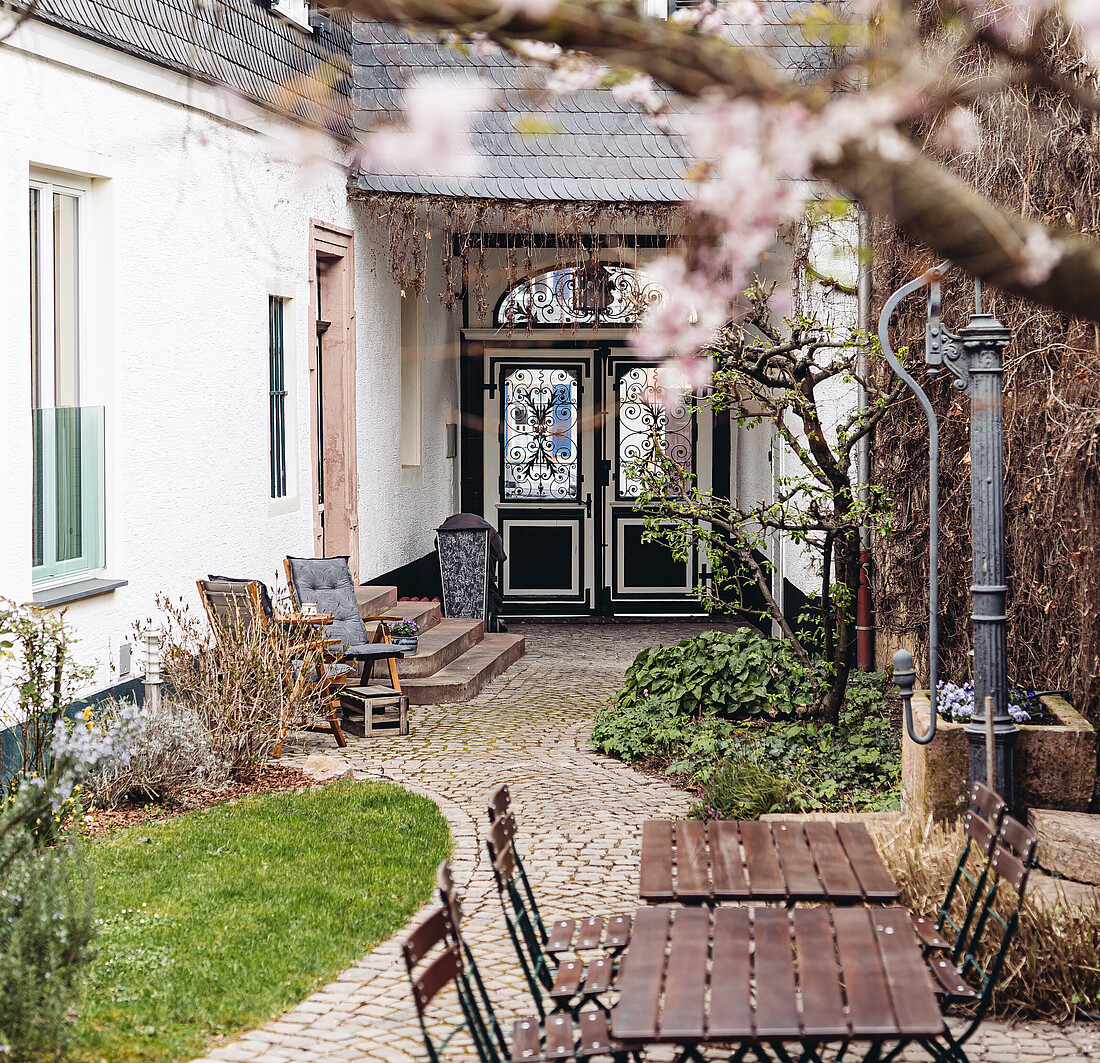Traders With a Creative Spirit
Rüdesheim Berg Schlossberg
In the middle of the Binger Loch, the VDP.GROSSE LAGE® BERG SCHLOSSBERG is situated at the bend of the Rhine and changes its orientation from south to southwest. It is the steepest site in the Rheingau and extends from 120m to 160m, benefiting from intense sunlight, as well as reflections from the Rhine. The site covers 25 hectares with soils of Taunus quartzite and phyllite slate.
Area
27,46 hectaresSoils
Taunus quartzite and phyllite slateExposure
South to southwestAltitude120-160mVarietiesRieslingClassificationVDP.GROSSE LAGERüdesheim Berg Roseneck
The wind-protected VDP.GROSSE LAGE® BERG ROSENECK is only 5.65 ha in size, but has a heterogeneous soil profile. While the western part is very stony, the eastern part of the site is dominated by loess-loam soils. With a slope of 50% and an elevation of 160-200 m, Berg Roseneck is a purely southern site and is planted exclusively with Riesling.
Area
5,65 hectaresSoils
Taunus quartzite, phyllite slate, loess-loam soilsExposure
SouthAltitude160-200mVarietiesRieslingClassificationVDP.GROSSE LAGERüdesheim Berg Rottland
The VDP.GROSSE LAGE® BERG ROTTLAND is located on the eastern edge of the Berg Schlossberg and covers 17.87 hectares with a pure southern exposure. The soil has a high percentage of grey slate and is partly stony and interspersed with quartzite and gravel. The site lies at an altitude of 100m to 150m, and tends to be dry. Thanks to the fog banks in the Rhine valley, it favours the development of the noble rot Botrytis.
Area
20,64 hectaresSoils
grey slate, quartzite, gravelExposure
SouthAltitude100-150mVarietiesRieslingClassificationVDP.GROSSE LAGEGeisenheim Kläuserweg
The VDP.GROSSE LAGE® KLÄUSERWEG lies to the west of the Johannisberg Schlossberg and enjoys southeastern to southwestern exposure to the sun all day long. The soils of calcareous loess loam are interspersed with quartzite and stones and lie at an altitude of 110m to 150m with a slope of 40%. The 20.64ha site was first mentioned in 1292 as Via Clusen.
Area
20,64 hectaresSoils
calcareous loess loam, quartziteExposure
Southeast to SouthwestAltitude110-150mVarietiesRieslingClassificationVDP.GROSSE LAGEGeisenheim Rothenberg
The VDP.GROSSE LAGE® ROTHENBERG takes its name from the soils which are infused with red iron oxide. The classified core of the site covers 5.44 hectares and has a southeastern to southern exposure at 135m to 145m. The soils consist of weathered rock with slate and Taunus quartzite components and have a good water retention capacity. Appearing on the oldest Rheingau site map, Rotheberg had the same first-class status as the Rüdenheimer Berg sites and Schloss Johannisberg, as well as Marcobrunn and Gräfenberg.
Area
5,44 hectaresSoils
Taunus quartzite, slate, weathered rock, ferric oxideExposure
South-SoutheastAltitude130-150mVarietiesRieslingClassificationVDP.GROSSE LAGEJohannisberg Hölle
The 5.4 ha VDP.GROSSE LAGE® HÖLLE is situated on a south-southwest facing slope at an altitude of 140m to 150m. It is sheltered from winds and enjoys full sun exposure, with a 20-40% slope. The soils consist of gravelly loam and Taunus quartzite and have good heat storage capacities.
Area
5,40 hectaresSoils
gravelly loam, Taunus quartziteExposure
South-southwestAltitude140-150mVarietiesRieslingClassificationVDP.GROSSE LAGEWinkel Jesuitengarten
The VDP.GROSSE LAGE® JESUITENGARTEN is situated at a comparatively low altitude of 90m to 95m and has a south-southwesterly orientation, with a slope of only 3%. The soil of the comparatively flat site of sandy loam with gravel and sand deposits has good heat storage capacities, making the Jesuitengarten one of the warmest sites in the Rheingau.
Area
---Soils
sandy loam, gravelExposure
SouthAltitude90-95mVarietiesRieslingClassificationVDP.GROSSE LAGEWinkel Hasensprung
The VDP.GROSSE LAGE® HASENSPRUNG consists of loess-loam soils and extends up to 110m to 150m in altitude. With a south-southwest orientation, the site has a moderate slope of 3% to 15%, and enjoys sunlight all day.
Area
26,87 hectaresSoils
loess-loamExposure
South-southwestAltitude110-150mVarietiesRieslingClassificationVDP.GROSSE LAGEOestrich Lenchen
The VDP.GROSSE LAGE® LENCHEN has a full south to southwest exposure and lies at an altitude of 110m to 135m. The site consists mainly of loess loam with pebbles as well as heavy, ferruginous clay marl and quartzite. With a slope of 5% to 15%, it is relatively flat and well supplied by water veins, so there are few issues with drought stress. It covers 32.96 hectares.
Area
32,96 hectaresSoils
loess-loam, gravel, ferruginous clay marl, quartziteExposure
South-southwestAltitude110-135mVarietiesRieslingClassificationVDP.GROSSE LAGEOestrich Rosengarten
Retaining its old vineyard walls, the VDP.GROSSE LAGE® ROSENGARTEN lies in the immediate vicinity of the banks of the Rhine and covers only 2.90 hectares. Since 1971, the Oestricher Rosengarten has been allocated to Lenchen, but since 2014, this historic site has once again been known by its old name. The site lies at an altitude of 93m and consists of gravelly and sandy loam.
Area
2,90 hectaresSoils
gravelly and sandy loamExposure
SouthAltitude93mVarietiesRieslingClassificationVDP.GROSSE LAGEMittelheim St. Nikolaus
The VDP.GROSSE LAGE® ST. NIKOLAUS is named after Saint Nicholas, whose statue stands at the upper edge of the site. The soils consist of calcareous loess loam with a gravel layer and sandy loess. The 24.13-hectare site has a southeasterly, south to southwesterly orientation and extends from 90m to 110m. Thanks to its low location and immediate proximity to the Rhine, the growing season always begins a little earlier here.
Area
24,13 hectaresSoils
calcareous loess loam, gravel, sandy loessExposure
Southeast-SouthwestAltitude90-110mVarietiesRieslingClassificationVDP.GROSSE LAGERüdesheim Kronnest
The VDP.ERSTE LAGE KRONNEST is situated above the Rüdesheimer Berg Rottland, at an altitude of 150m The 3.7-hectare site was partially spared from land consolidation, so that parts of the old vineyard walls around the steep slope could be preserved. Dad Kronnest has soils of Taunus quartzite, is well aerated and always yields healthy grapes. The Wegeler wineries recultivated three of the old terraces in 2015.
Area
3,70 hectaresSoils
Taunus quartziteExposure
SouthAltitude150mVarietiesRieslingClassificationVDP.ERSTE LAGE
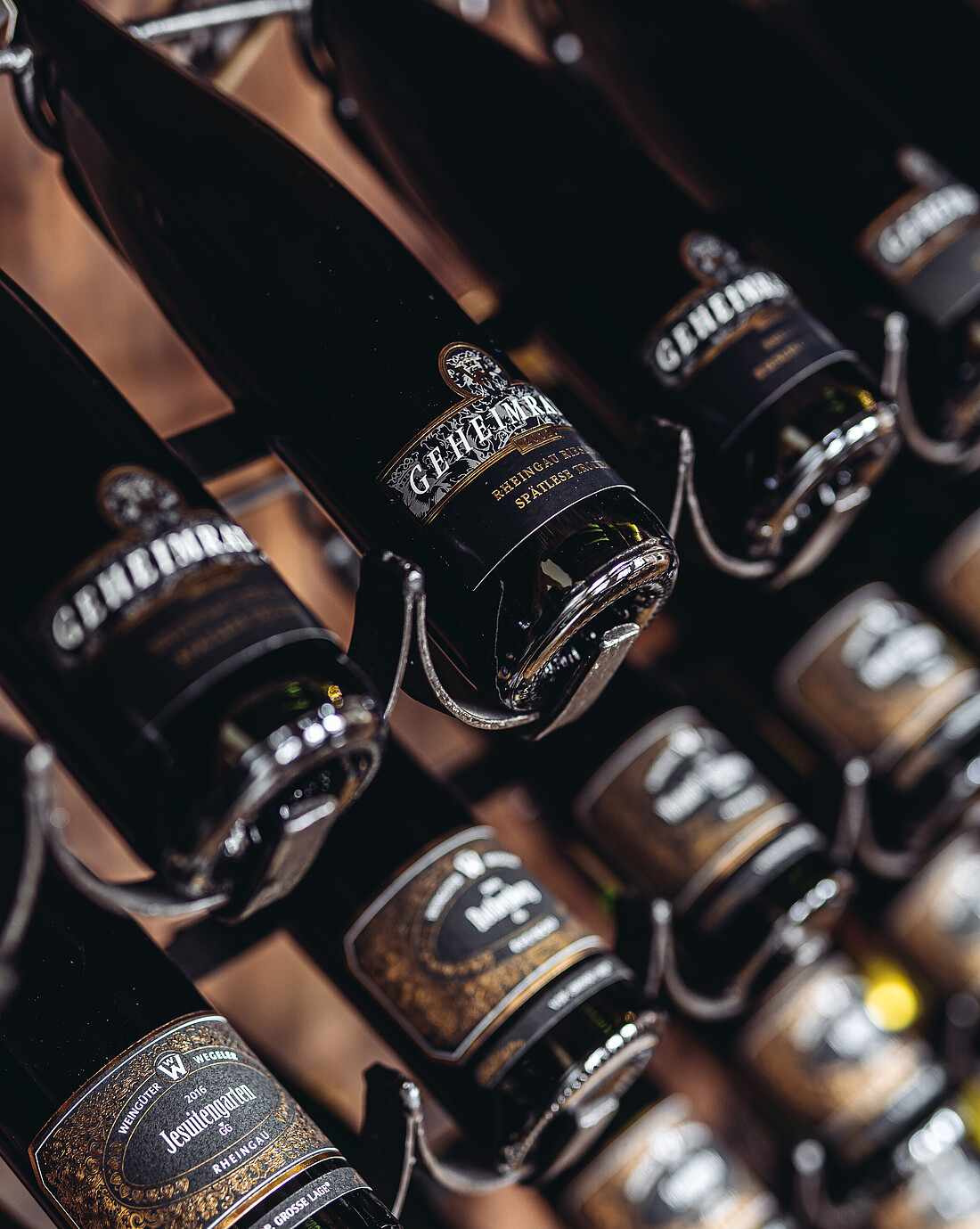
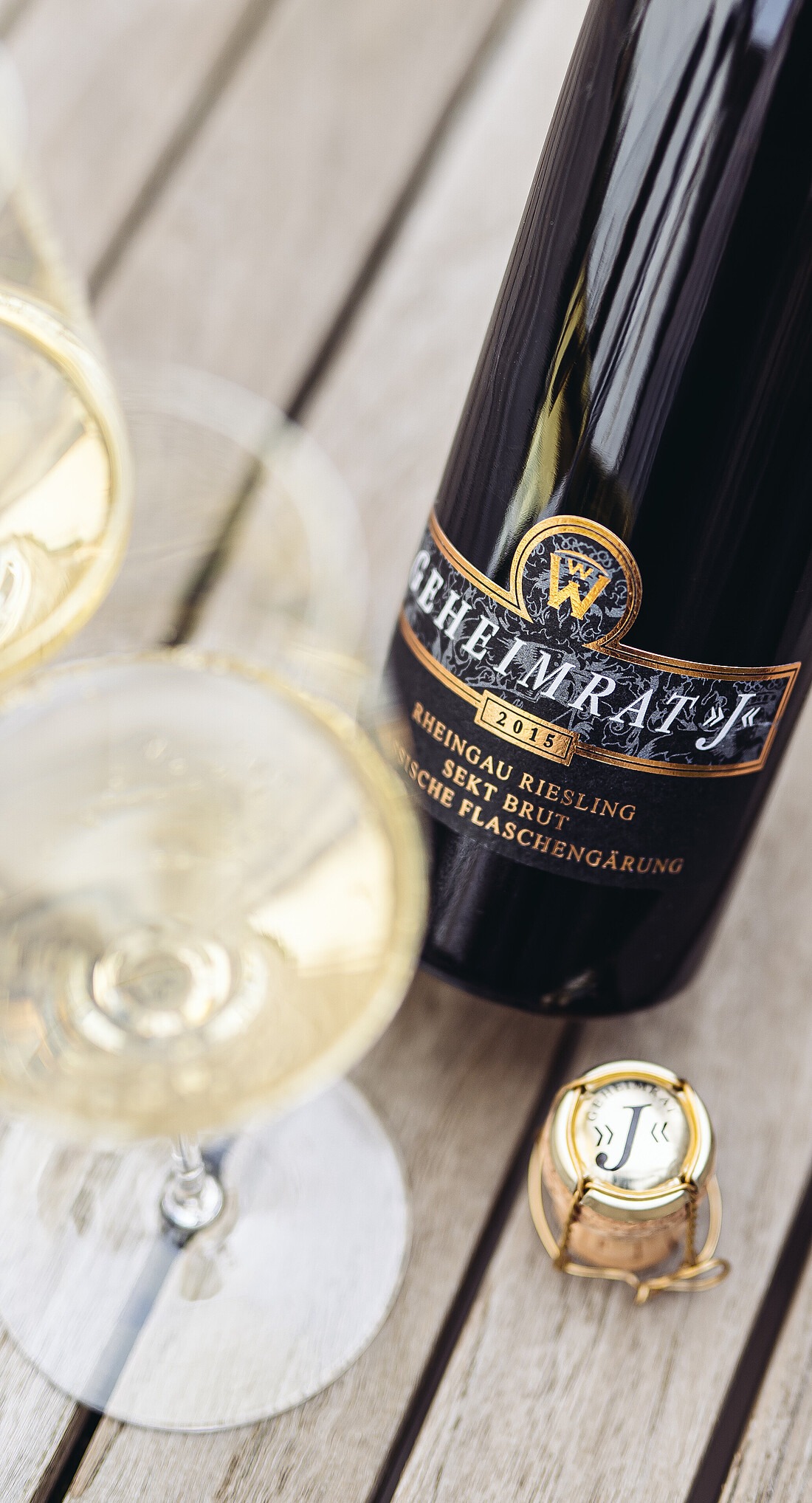
The Wegeler winery stands for long-lived Riesling from first-class sites in the Rheingau; we also produce a small volume of sparkling wine. Since 1884, our headquarters have been located at Friedensplatz in Oestrich-Winkel.
The history of the House of Wegeler is closely linked to the Deinhard sparkling wine cellars. A native of Koblenz, Julius Wegeler was hired in 1857 as export manager of the local company Deinhard & Jordan to oversee exports to the English market. He moved to London and enjoyed great success, soon becoming a partner in the company. In 1861 he married Emma Deinhard and was entrusted with the management of the Deinhard winery after the unexpected death of her father, August Deinhard.
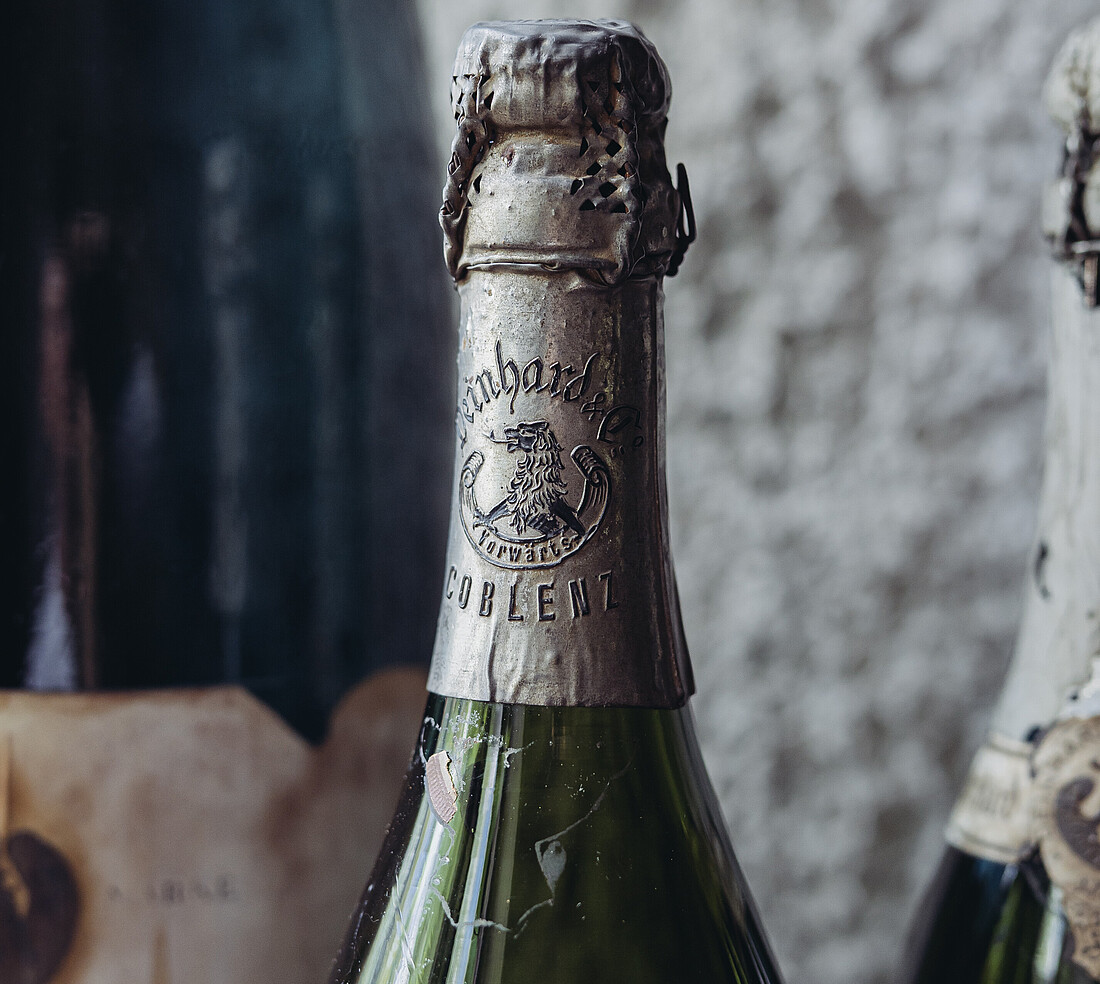
At the time, Deinhard & Jordan had a portfolio that consisted not only of sparkling wines, but also of German still wines from the best vineyards, with enormous vintage depth. Wegeler gradually built up the medium-sized company into a major international enterprise with over 200 employees. By the end of the 19th century, England, the USA, Australia and South Africa as well as East Asia maintained close trade relations with Deinhard.
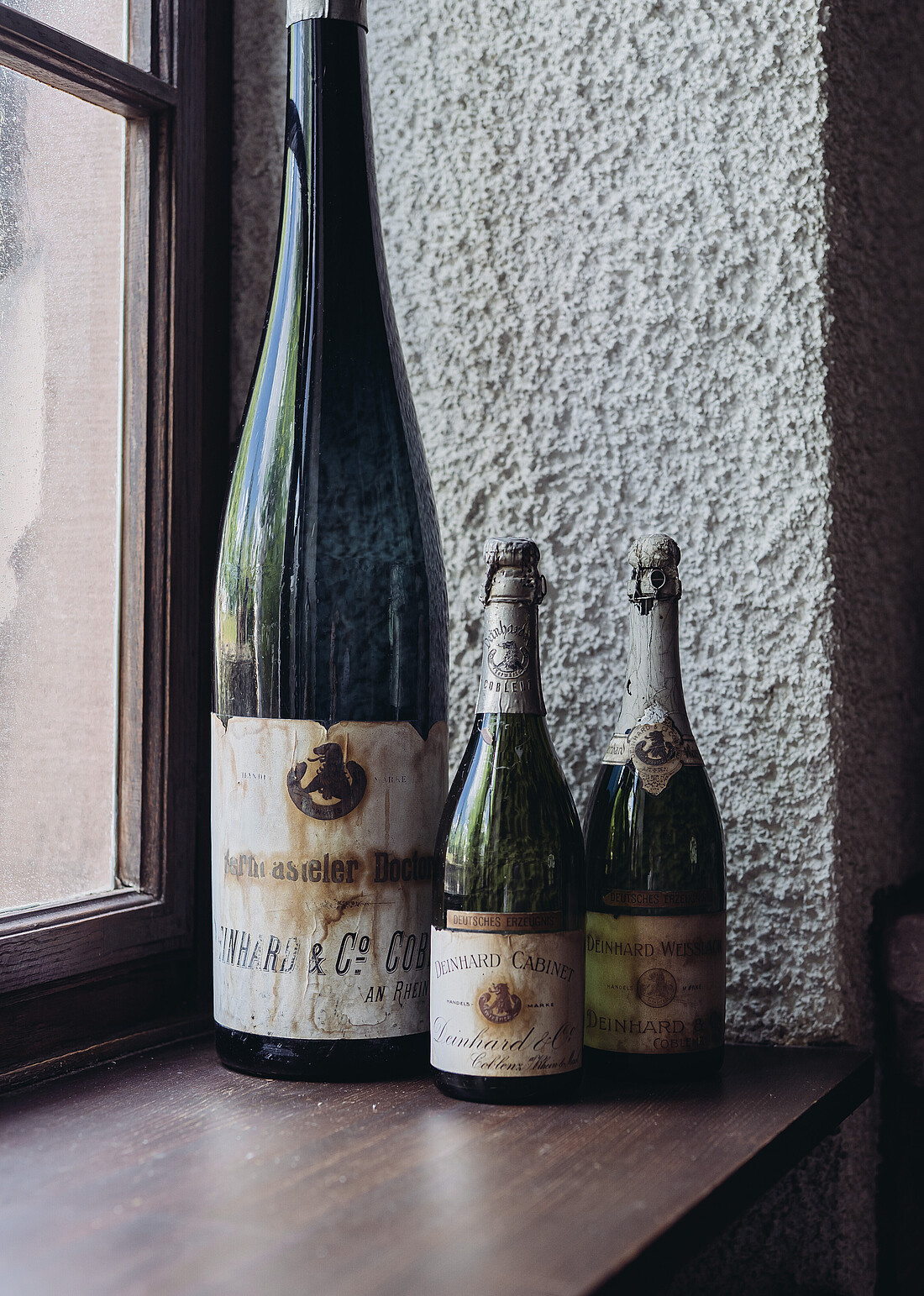
The history of the Geheimrat Julius Wegeler estate management began with the purchase of the vineyard from Baron Watzel von Karben and the associated vineyard sites in Rüdesheim. When the business was expanded in 1884 to include another estate in Oestrich-Winkel, the current headquarters, this result was two winery administrations.
